Immediate versus delayed postpartum insertion of contraceptive implant and IUD for contraception
- PMID: 36302159
- PMCID: PMC9612833
- DOI: 10.1002/14651858.CD011913.pub3
Immediate versus delayed postpartum insertion of contraceptive implant and IUD for contraception
Abstract
Background: Long-acting reversible contraception (LARC), including intrauterine devices (IUDs) and contraceptive implants, are highly effective, reversible methods of contraception. Providing LARC methods during the postpartum period is important to support contraceptive choice, and to prevent unintended pregnancy and short interpregnancy intervals. Delaying offering contraception to postpartum people until the first comprehensive postpartum visit, traditionally at around six weeks postpartum, may put some postpartum people at risk of unintended pregnancy, either due to loss to follow-up or because of initiation of sexual intercourse prior to receiving contraception. Therefore, immediate provision of highly effective contraception, prior to discharge from hospital, has the potential to improve contraceptive use and prevent unintended pregnancies and short interpregnancy intervals.
Objectives: To compare the initiation rate, utilization rates (at six months and 12 months after delivery), effectiveness, and adverse effects of immediate versus delayed postpartum insertion of implants and IUDs for contraception.
Search methods: We searched the Cochrane Central Register of Controlled Trials (CENTRAL), MEDLINE, Embase, and POPLINE for eligible studies up to December 2020. We examined review articles and contacted investigators. We checked registers of ongoing clinical trials, citation lists of included studies, key textbooks, grey literature, and previous systematic reviews for potentially relevant studies.
Selection criteria: We sought randomized controlled trials (RCTs) that compared immediate postpartum versus delayed insertion of contraceptive implant and IUDs for contraception.
Data collection and analysis: Two review authors (JS, SK) independently screened titles and abstracts of the search results, and assessed the full-text articles of potentially relevant studies for inclusion. They extracted data from the included studies, assessed risk of bias, compared results, and resolved disagreements by consulting a third review author (PL, SA or PP). We contacted investigators for additional data, where possible. We computed the Mantel-Haenszel or inverse variance risk ratio (RR) with 95% confidence interval (CI) for binary outcomes and the mean difference (MD) with 95% CI for continuous variables.
Main results: In this updated review, 16 studies met the inclusion criteria; five were studies of contraceptive implants (715 participants) and 11 were studies of IUDs (1894 participants). We identified 12 ongoing studies. We applied GRADE judgements to our results; the overall certainty of the evidence for each outcome ranged from moderate to very low, with the main limitations being risk of bias, inconsistency, and imprecision. Contraceptive implants Immediate insertion probably improves the initiation rate for contraceptive implants compared with delayed insertion (RR 1.48, 95% CI 1.11 to 1.98; 5 studies, 715 participants; I2 = 95%; moderate-certainty evidence). We are uncertain if there was a difference between the two groups for the utilization rate of contraceptive implants at six months after delivery (RR 1.16, 95% CI 0.90 to 1.50; 3 studies, 330 participants; I2 = 89%; very low-certainty evidence) or at 12 months after insertion (RR 0.98, 95% CI 0.93 to 1.04; 2 studies, 164 participants; I2 = 0%; very low-certainty evidence). People who received an immediate postpartum contraceptive implant insertion may have had a higher mean number of days of prolonged vaginal bleeding within six weeks postpartum (mean difference (MD) 2.98 days, 95% CI -2.71 to 8.66; 2 studies, 420 participants; I2 = 91%; low-certainty evidence) and a higher rate of other adverse effects in the first six weeks after birth (RR 2.06, 95% CI 1.38 to 3.06; 1 study, 215 participants; low-certainty evidence) than those who received a delayed postpartum insertion. We are uncertain if there was a difference between the two groups for prolonged bleeding at six months after delivery (RR 1.19, 95% CI 0.29 to 4.94; 2 studies, 252 participants; I2 = 0%; very low-certainty evidence). There may be little or no difference between the two groups for rates of unintended pregnancy at six months (RR 0.20, 95% CI 0.01 to 4.08; one study, 205 participants; low-certainty evidence). We are uncertain whether there was a difference in rates of unintended pregnancy at 12 months postpartum (RR 1.82, 95% CI 0.38 to 8.71; 1 study, 64 participants; very low-certainty evidence). There may be little or no difference between the two groups for any breastfeeding rates at six months (RR 0.97, 95% CI 0.92 to 1.01; 2 studies, 225 participants; I2 = 48%; low-certainty evidence). IUDs Immediate insertion of IUDs probably improves the initiation rate compared with delayed insertion, regardless of type of IUD (RR 1.27, 95% CI 1.07 to 1.51; 10 studies, 1894 participants; I2 = 98%; moderate-certainty evidence). However, people who received an immediate postpartum IUD insertion may have had a higher expulsion rate at six months after delivery (RR 4.55, 95% CI 2.52 to 8.19; 8 studies, 1206 participants; I2 = 31%; low-certainty evidence) than those who received a delayed postpartum insertion. We are uncertain if there was a difference between the two groups in the utilization of IUDs at six months after insertion (RR 1.02, 95% CI 0.65 to 1.62; 6 studies, 971 participants; I2 = 96%; very low-certainty evidence) or at 12 months after insertion (RR 0.86, 95% CI 0.5 to 1.47; 3 studies, 796 participants; I2 = 92%; very low-certainty evidence). Immediate IUDs insertion may reduce unintended pregnancy at 12 months (RR 0.26, 95% CI 0.17 to 0.41; 1 study, 1000 participants; low-certainty evidence). We are uncertain whether there was difference in any breastfeeding rates at six months in people receiving progestin-releasing IUDs (RR 0.90, 95% CI 0.63 to 1.30; 5 studies, 435 participants; I2 = 54%; very low-certainty evidence).
Authors' conclusions: Evidence from this updated review indicates that immediate postpartum insertion improves the initiation rate of both contraceptive implants and IUDs by the first postpartum visit compared to delayed insertion. However, it is not clear whether that there are differences in utilization rates at six and 12 months postpartum. We are uncertain whether there is any difference in the unintended pregnancy rate at 12 months. Provision of progestin-releasing implants and IUDs immediately postpartum may have little or no negative impact on breastfeeding. However, the expulsion rate of IUDs and prolonged vaginal bleeding associated with immediate implants appears to be higher.
Trial registration: ClinicalTrials.gov NCT01293760 NCT01767285 NCT02866279 NCT03353012 NCT03404622 NCT03492034 NCT03585504.
Copyright © 2022 The Cochrane Collaboration. Published by John Wiley & Sons, Ltd.
Conflict of interest statement
Jen Sothornwit: none known
Srinaree Kaewrudee: none known
Pisake Lumbiganon: none known
Porjai Pattanittum: none known
Sarah Averbach: none known
Figures
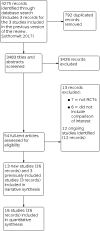
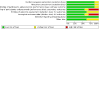

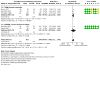
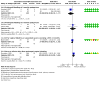
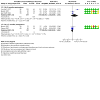
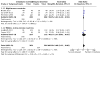
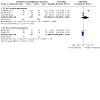

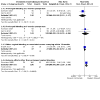
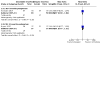
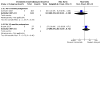
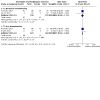
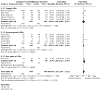

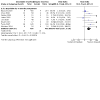
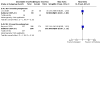

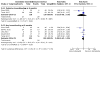
Update of
-
Immediate versus delayed postpartum insertion of contraceptive implant for contraception.Cochrane Database Syst Rev. 2017 Apr 22;4(4):CD011913. doi: 10.1002/14651858.CD011913.pub2. Cochrane Database Syst Rev. 2017. Update in: Cochrane Database Syst Rev. 2022 Oct 27;10:CD011913. doi: 10.1002/14651858.CD011913.pub3. PMID: 28432791 Free PMC article. Updated.
Similar articles
-
Immediate versus delayed postpartum insertion of contraceptive implant for contraception.Cochrane Database Syst Rev. 2017 Apr 22;4(4):CD011913. doi: 10.1002/14651858.CD011913.pub2. Cochrane Database Syst Rev. 2017. Update in: Cochrane Database Syst Rev. 2022 Oct 27;10:CD011913. doi: 10.1002/14651858.CD011913.pub3. PMID: 28432791 Free PMC article. Updated.
-
Immediate versus delayed postabortal insertion of contraceptive implant.Cochrane Database Syst Rev. 2022 May 18;5(5):CD013565. doi: 10.1002/14651858.CD013565.pub2. Cochrane Database Syst Rev. 2022. PMID: 35583092 Free PMC article.
-
Electronic cigarettes for smoking cessation.Cochrane Database Syst Rev. 2021 Sep 14;9(9):CD010216. doi: 10.1002/14651858.CD010216.pub6. Cochrane Database Syst Rev. 2021. Update in: Cochrane Database Syst Rev. 2022 Nov 17;11:CD010216. doi: 10.1002/14651858.CD010216.pub7. PMID: 34519354 Free PMC article. Updated.
-
Treatment for women with postpartum iron deficiency anaemia.Cochrane Database Syst Rev. 2024 Dec 13;12(12):CD010861. doi: 10.1002/14651858.CD010861.pub3. Cochrane Database Syst Rev. 2024. PMID: 39670550
-
Electronic cigarettes for smoking cessation.Cochrane Database Syst Rev. 2022 Nov 17;11(11):CD010216. doi: 10.1002/14651858.CD010216.pub7. Cochrane Database Syst Rev. 2022. Update in: Cochrane Database Syst Rev. 2024 Jan 8;1:CD010216. doi: 10.1002/14651858.CD010216.pub8. PMID: 36384212 Free PMC article. Updated.
Cited by
-
An overview of reviews of breastfeeding barriers and facilitators: Analyzing global research trends and hotspots.Glob Epidemiol. 2025 Mar 6;9:100192. doi: 10.1016/j.gloepi.2025.100192. eCollection 2025 Jun. Glob Epidemiol. 2025. PMID: 40129756 Free PMC article. Review.
-
Follow-up of immediate postpartum intrauterine device insertion: a scoping review protocol.BMJ Open. 2024 Dec 20;14(12):e092783. doi: 10.1136/bmjopen-2024-092783. BMJ Open. 2024. PMID: 39806629 Free PMC article.
-
Planning postpartum contraception for women with substance use disorders: Utilisation of the birth admission.Aust N Z J Obstet Gynaecol. 2025 Apr;65(2):235-242. doi: 10.1111/ajo.13887. Epub 2024 Oct 21. Aust N Z J Obstet Gynaecol. 2025. PMID: 39428903 Free PMC article.
-
Expanding access to postpartum contraception.Curr Opin Obstet Gynecol. 2024 Oct 1;36(5):331-337. doi: 10.1097/GCO.0000000000000982. Epub 2024 Aug 2. Curr Opin Obstet Gynecol. 2024. PMID: 39109628 Free PMC article. Review.
-
Use of contraceptive implants at 12 months in women who intended to undergo immediate versus delayed postpartum insertion following high-risk pregnancy.Obstet Gynecol Sci. 2023 May;66(3):241-251. doi: 10.5468/ogs.22280. Epub 2023 Apr 14. Obstet Gynecol Sci. 2023. PMID: 37062533 Free PMC article.
References
References to studies included in this review
Averbach 2017 {published data only}
Bayoumi 2020 {published data only}
-
- Bayoumi YA, Dakhly DM, Bassiouny YA, Gouda HM, Hassan MA, Hassan AA. Post-placental intrauterine device insertion vs puerperal insertion in women undergoing caesarean delivery in Egypt: a 1 year randomised controlled trial. European Journal of Contraception & Reproductive Health Care 2020;25(6):439-44. - PubMed
Bryant 2017 {published data only}
Carmo 2017 {published data only}
-
- Nadai M, De Melo Pereira do Carmo LS, Braga G, Fregonesi Infante B, Stifani BM, Ferriani RA, et al. Immediate postpartum insertion of the etonogestrel implant and bleeding pattern: a RCT. International Journal of Gynecology and Obstetrics 2018;143:378.
-
- Vieira CS, Nadai MN, Melo Pereira do Carmo LS, Braga GC, Infante BF, Stifani BM, et al. Timing of postpartum etonogestrel-releasing implant insertion and bleeding patterns, weight change, 12-month continuation and satisfaction rates: a randomized controlled trial. Contraception 2019;100(4):258-63. - PubMed
Chen 2010 {published data only}
-
- Chen BA, Hayes JL, Hohmann HL, Perriera LK, Reeves MF, Creinin MD. A randomized trial of postplacental compared to delayed insertion of the levonorgestrel-releasing intrauterine device after vaginal delivery (abstract). Contraception 2009;80(2):205.
Dahlke 2011 {published data only}
-
- Dahlke JD, Terpstra ER, Ramseyer AM, Busch JM, Rieg T, Magann EF. Postpartum insertion of levonorgestrel--intrauterine system at three time periods: a prospective randomized pilot study. Contraception 2011;84(3):244-8. - PubMed
Dias 2015 {published data only}
-
- Dias TD, Wijekoon D, Ganeshamoorthy P, Abeykoon S, Liyanage G, Padeniya T. Post-placental and interval intrauterine contraceptive device (IUD) insertion: does timing matter? BJOG: An International Journal of Obstetrics and Gynaecology 2015;122:395-7.
Gurtcheff 2011 {published data only}
-
- Gurtcheff SE, Turok DK, Stoddard G, Murphy PA, Gibson M, Jones KP. Lactogenesis after early postpartum use of the contraceptive implant: a randomized controlled trial. Obstetrics and Gynecology 2011;117(5):1114-21. - PubMed
Lester 2015 {published data only (unpublished sought but not used)}
-
- Averbach S, Lester F, Fortin J, Byamugisha J, Goldberg A, Kakaire O. Acceptability of the IUD among women who opted out of a randomized controlled trial of intracesarean insertion of the copper-T 380A in Kampala, Uganda. Contraception 2012;86:318.
-
- Lester F, Kakaire O, Byamugisha J, Averbach S, Fortin J, Maurer R, et al. Intracesarean insertion of the Copper T380A versus 6 weeks post-cesarean: a randomized clinical trial. Contraception 2015;91(3):198-203. - PubMed
-
- Lester F, Kakaire O, Byamugisha J, Fortin J, Averbach S, Maurer R, et al. Intracesarean insertion of the Copper T 380A vs. 6 week post-cesarean insertion: an RCT. International Journal of Gynaecology and Obstetrics 2012;119:S3. [DOI: ]
Levi 2015 {published data only}
Ogburn 2013 {published data only (unpublished sought but not used)}
-
- Ogburn T, Espey E, Leeman L, Singh R, Pereda B, Carr S. A randomized trial of immediate postpartum versus interval insertion of an intrauterine device. Contraception 2013;88(3):455.
Phemister 1995 {published data only}
-
- Phemister DA, Laurent S, Harrison FN Jr. Use of Norplant contraceptive implants in the immediate postpartum period: safety and tolerance. American Journal of Obstetrics and Gynecology 1995;172(1 Pt 1):175-9. - PubMed
Soon 2018 {published data only}
Stuart 2015 {published data only}
-
- Stuart GS, Lesko C, Stuebe A, Bryant A. Breastfeeding and postpartum insertion of the levonorgestrel intrauterine system: a randomized trial. Obstetrics and Gynecology 2014;123 Suppl 1:15S.
-
- Stuart GS, Lesko CR, Stuebe AM, Bryant AG, Levi EE, Danvers AI. A randomized trial of levonorgestrel intrauterine system insertion 6 to 48 h compared to 6 weeks after vaginal delivery; lessons learned. Contraception 2015;91(4):284-8. - PubMed
Turok 2017 {published data only}
-
- Espey E, Turok DK, Sanders J, Singh RH, Thaxton L, Leeman L. Breastfeeding continuation in postplacental versus interval postpartum IUD insertion: the breastfeeding levonorgestrel IUD study (BLIS): a randomized controlled trial. Contraception 2016;94(4):407. [DOI: ]
-
- Turok D, Espey E, Sanders JN, Eggebrotten J, Bullock H, Gawron L. The effect of postplacental versus interval postpartum IUD insertion on lactogenesis: the breastfeeding levonorgestrel IUD study (BLIS): a randomized controlled trial. Contraception 2016;94(4):390.
-
- Turok DK, Leeman L, Sanders JN, Thaxton L, Eggebroten JL, Yonke N, et al. Immediate postpartum levonorgestrel intrauterine device insertion and breast-feeding outcomes: a noninferiority randomized controlled trial. American Journal of Obstetrics and Gynecology 2017;217(6):665.e1-8. [DOI: 10.1016/j.ajog.2017.08.003] - DOI - PMC - PubMed
Whitaker 2014 {published data only}
-
- Whitaker AK, Endres LK, Mistretta SQ, Gilliam ML. Postplacental insertion of the levonorgestrel intrauterine device after cesarean delivery vs. delayed insertion: a randomized controlled trial. Contraception 2014;89(6):534-9. - PubMed
References to studies excluded from this review
Baldwin 2014 {published data only}
-
- Baldwin MK, Edelman AB, Lim JY, Nichols MD, Bednarek PH, Jensen JT. Intrauterine device placement at 3 versus 6 weeks postpartum: a randomized trial. Contraception 2016;93(4):356-63. - PubMed
Braga 2015 {published data only}
-
- Braga GC, Ferriolli E, Quintana SM, Ferriani RA, Pfrimer K, Vieira CS. Immediate postpartum initiation of etonogestrel-releasing implant: a randomized controlled trial on breastfeeding impact. Contraception 2015;92(6):536-42. - PubMed
Brito 2009 {published data only}
-
- Brito MB, Ferriani RA, Quintana SM, Yazlle ME, Silva de Sá MF, Vieira CS. Safety of the etonogestrel-releasing implant during the immediate postpartum period: a pilot study. Contraception 2009;80(6):519-26. - PubMed
Brito 2012 {published data only}
-
- Brito MB, Ferriani RA, Meijers JC, Garcia AA, Quintana SM, Silva de Sá MF, et al. Effects of the etonogestrel-releasing contraceptive implant inserted immediately postpartum on maternal hemostasis: a randomized controlled trial. Thrombosis Research 2012;130(3):355-60. - PubMed
Bryant 2013 {published data only}
-
- Bryant AG, Kamanga G, Stuart GS, Haddad LB, Meguid T, Mhango C. Immediate postpartum versus 6-week postpartum intrauterine device insertion: a feasibility study of a randomized controlled trial. African Journal of Reproductive Health 2013;17(2):72-9. - PubMed
Gariepy 2015 {published data only}
Ireland 2014 {published data only}
-
- Ireland LD, Goyal V, Raker CA, Murray A, Allen RH. The effect of immediate postpartum compared to delayed postpartum and interval etonogestrel contraceptive implant insertion on removal rates for bleeding. Contraception 2014;90(3):253–8. - PubMed
Pentickly 2013 {published data only}
-
- Pentickly S, Ratcliffe SJ, Schreiber C. The impact of progestin-only contraceptives on postpartum weight loss (POPP): a year-long randomized controlled study. Contraception 2013;88(3):434.
Shabaan 1985 {published data only}
-
- Shaaban MM, Salem HT, Abdullah KA. Influence of levonorgestrel contraceptive implants, NORPLANT, initiated early postpartum upon lactation and infant growth. Contraception 1985;32(6):623-35. - PubMed
Taneepanichkul 2001 {published data only}
-
- Taneepanichskul S, Tanprasertkul C. Use of Norplant implants in the immediate postpartum period among asymptomatic HIV-1-positive mothers. Contraception 2001;64(1):39-41. - PubMed
Tocce 2012 {published data only}
-
- Tocce KM, Sheeder JL, Teal SB. Rapid repeat pregnancy in adolescents: do immediate postpartum contraceptive implants make a difference? American Journal of Obstetrics and Gynecology 2012;206(6):481.e1-7. - PubMed
VanDerPas 1980 {published data only}
-
- Van Der Pas MT, Delbeke L, Van Dets H. Comparative performance of two copper-wired IUDs (ML Cu 250 and T Cu 200: immediate postpartum and interval insertion. Contraceptive Delivery Systems 1980;1:27-35. - PubMed
Wilson 2014 {published data only}
-
- Wilson S, Tennant C, Sammel MD, Schreiber C. Immediate postpartum etonogestrel implant: a contraception option with long-term continuation. Contraception 2014;90(3):259-64. - PubMed
References to ongoing studies
EUCTR2017‐001945‐29‐SE {published data only}
-
- EUCTR2017-001945-29-SE. Immediate post partum LNG-IUS insertion or standard insertion procedure after childbirth An open-label, randomized, multicenter study. ww.clinicaltrialsregister.eu/ctr-search/search?query=eudract_number:2017... (first received 14 July 2017).
NCT01161095 {published data only}
-
- NCT01161095. A multicenter analysis of levonorgestrel-intrauterine system (LNG-IUS) use in the postpartum period. clinicaltrials.gov/ct2/show/study/NCT01161095 (first received 13 July 2010).
NCT01272960 {published data only}
-
- NCT01272960. Mirena intrauterine system timing of insertion: a randomized controlled trial (MISTIC). linicaltrials.gov/ct2/show/NCT01272960 (first received 10 January 2011).
NCT01666912 {published data only}
-
- NCT01666912. Postpartum etonogestrel implant for adolescents (PPImplant) [Etonogestrel-releasing subdermal implant for adolescents in the postpartum period: a randomized controlled trial]. clinicaltrials.gov/ct2/show/NCT01666912 (first received 16 August 2012).
NCT01767285 {published data only}
-
- NCT01767285. A randomized controlled trial of immediate postpartum etonogestrel implant versus six-week postpartum etonogestrel implant: a pilot study [Immediate vs. delayed postpartum etonogestrel implant]. clinicaltrials.gov/ct2/show/NCT01767285 (first received 19 December 2016).
NCT02674139 {published data only}
-
- NCT02674139. Comparison between intrauterine contraceptive device insertion during cesarean section vs conventional application [Comparative study of intrauterine contraceptive device insertion during caesarean section versus conventional application]. clinicaltrials.gov/ct2/show/NCT02674139 (first received 4 February 2016).
NCT02866279 {published data only}
-
- NCT02866279. Immediate postpartum contraceptive implant placement and breastfeeding success in women at risk for low milk supply: a non-inferiority trial. clinicaltrials.gov/ct2/show/NCT02866279 (first received 15 August 2016).
NCT03353012 {published data only}
-
- NCT03353012. Acceptability & tolerance of immediate versus delayed postpartum contraceptive implant. clinicaltrials.gov/ct2/show/NCT03353012 (first received 24 November 2017).
NCT03404622 {published data only}
-
- NCT03404622. Immediate post-placental insertion of the intrauterine contraceptive device during cesarean delivery versus 6 week post-cesarean insertion. clinicaltrials.gov/ct2/show/NCT03404622 (first received 19 January 2018).
NCT03492034 {published data only}
-
- NCT03492034. Insertion of intrauterine contraceptive device during cesarean section: randomized clinical trial. linicaltrials.gov/ct2/show/NCT03492034 (first received 10 April 2018).
NCT03585504 {published data only}
-
- NCT03585504. Early insertion of a hormonal intrauterine device after childbirth [A randomized controlled trial of immediate versus delayed insertion of Implanon in postpartum adolescents]. clinicaltrials.gov/ct2/show/NCT03585504 (first received 13 July 2018).
NCT03978598 {published data only}
-
- NCT03978598. Effect of immediate versus standard postpartum insertion of the contraceptive implant on breastfeeding outcomes [Breastfeeding etonogestrel implant study (LACTO-Rod)]. clinicaltrials.gov/ct2/show/NCT03978598 (first received 7 June 2019).
Additional references
ACOG 2016
-
- American College of Obstetricians and Gynecologists’ Committee on Obstetric Practice. Committee Opinion No. 670: Immediate postpartum long-acting reversible contraception. Obstetrics and Gynecology 2016;128(2):e32-7. - PubMed
ACOG 2017
-
- American College of Obstetricians and Gynecologists. ACOG Practice Bulletin No. 186: Long-acting reversible contraception: implants and intrauterine devices. Obstetrics and Gynecology 2017;130(5):e251-69. - PubMed
ACOG 2018
-
- Committee on Adolescent Health Care Long-Acting Reversible Contraception Working Group, The American College of Obstetricians and Gynecologists. Committee opinion no. 735: Adolescents and long-acting reversible contraception: implants and intrauterine devices. Obstetrics and Gynecology 2018;131(5):e130-9. - PubMed
Campbell 2000
-
- Campbell MJ. Cluster randomised trials in general (family) practice research. Statistical Methods in Medical Research 2000;9(2):81-94. - PubMed
Chaovisitsaree 2012
-
- Chaovisitsaree S, Noi-um S, Kietpeerakool C. Review of postpartum contraceptive practices at Chiang Mai University Hospital: implications for improving quality of service. Medical Principles and Practice 2012;21(2):145-9. - PubMed
Covidence [Computer program]
-
- Covidence. Version accessed November 2019. Melbourne, Australia: Veritas Health Innovation, Available at covidence.org.
Deeks 2001
-
- Deeks J, Altman D, Bradburn M. Statistical methods for examining heterogeneity and combining results from several studies in meta-analysis. In: Egger M, Davey Smith G, Altman DG, editors(s). Systematic Reviews in Health Care: Meta-Analysis in Context. 2nd edition. London: BMJ Publication Group, 2001.
DerSimonian 1986
-
- DerSimonian R, Laird N. Meta-analysis in clinical trials. Controlled Clinical Trials 1986;7(3):177-88. - PubMed
Finer 2011
-
- Finer LB, Kost K. Unintended pregnancy rates at the state level. Perspectives on Sexual and Reproductive Health 2011;43(2):78-87. - PubMed
Fraser 1995
-
- Fraser AM, Brockert JE, Ward RH. Association of young maternal age with adverse reproductive outcomes. New England Journal of Medicine 1995;332(17):1113-7. - PubMed
GRADEproGDT 2014 [Computer program]
-
- GRADEpro GDT. Version accessed 11 November 2016. Hamilton (ON): GRADE Working Group, McMaster University, 2014.
Higgins 2019
-
- Higgins JP, Thomas J, Chandler J, Cumpston M, Li T, Page MJ, Welch VA, editor(s). Cochrane Handbook for Systematic Reviews of Interventions Version 6.0 (updated July 2019). Cochrane, 2019. Available from training.cochrane.org/handbook/archive/v6. - PMC - PubMed
Hubacher 2018
Jatlaoui 2018
Liberati 2009
-
- Liberati A, Altman DG, Tetzlaff J, Mulrow C, Gøtzsche PC, Ioannidis JP, et al. The PRISMA statement for reporting systematic reviews and meta-analyses of studies that evaluate health care interventions: explanation and elaboration. PLOS Medicine 2009;6(7):e1000100. [DOI: 10.1371/journal.pmed.1000100] - DOI - PMC - PubMed
Lopez 2015
Moore 2015
-
- Moore Z, Pfitzer A, Gubin R, Charurat E, Elliott L, Croft T. Missed opportunities for family planning: an analysis of pregnancy risk and contraceptive method use among postpartum women in 21 low- and middle-income countries. Contraception 2015;92(1):31-9. [DOI: 10.1016/j.contraception.2015.03.007] - DOI - PubMed
Nkwabong 2015
-
- Nkwabong E, Ilue EE, Bisong CE. Factors associated with poor attendance at the postpartum clinic six weeks after delivery in Cameroon. International Journal of Gynaecology and Obstetrics 2015;129(3):248-50. - PubMed
Ortiz 1996
-
- Ortiz ME, Croxatto HB, Bardin CW. Mechanisms of action of intrauterine devices. Obstetrical and Gynecological Survey 1996;51(12 Suppl):S42-51. - PubMed
Phillips 2016
Reed 2020
-
- Reed S, Getahun D, Gatz J, Lynen R, Asiimwe A, Anthony M. 78 Postpartum timing of IUD insertion is associated with risk of uterine perforation: results from APEX IUD. Contraception 2020;102(4):302.
RevMan 2014 [Computer program]
-
- Review Manager 5 (RevMan 5). Version 5.3. Copenhagen: Nordic Cochrane Centre, The Cochrane Collaboration, 2014.
Rodriguez 2009
-
- Rodriguez MI, Kaunitz AM. An evidence-based approach to postpartum use of depot medroxyprogesterone acetate in breastfeeding women. Contraception 2009;80(1):4-6. - PubMed
Schünemann 2011
-
- Schünemann HJ, Oxman AD, Higgins JP, Vist GE, Glasziou P, Guyatt GH. Chapter 11: Presenting results and 'Summary of findings' tables. In: Higgins JP, Green S, editor(s). Cochrane Handbook for Systematic Reviews of Interventions Version 5.1.0 (updated March 2011). The Cochrane Collaboration, 2011. Available from training.cochrane.org/handbook/archive/v5.1/.
Singh 2010
-
- Singh S, Sedgh G, Hussain R. Unintended pregnancy: worldwide levels, trends, and outcomes. Studies in Family Planning 2010;41(4):241-50. - PubMed
Speroff 2008
-
- Speroff L, Mishell DR Jr. The postpartum visit: it's time for a change in order to optimally initiate contraception. Contraception 2008;78(2):90-8. - PubMed
Stanford 2002
-
- Stanford JB, Mikolajczyk RT. Mechanisms of action of intrauterine devices: update and estimation of postfertilization effects. American Journal of Obstetrics and Gynecology 2002;187(6):1699-708. - PubMed
Thiel de Bocanegra 2013
-
- Thiel de Bocanegra H, Chang R, Menz M, Howell M, Darney P. Postpartum contraception in publicly-funded programs and interpregnancy intervals. Obstetrics and Gynecology 2013;122(2 Pt 1):296-303. - PubMed
Ukoumunne 1999
-
- Ukoumunne OC, Gulliford MC, Chinn S, Sterne JA, Burney PG. Methods for evaluating area-wide and organisation-based interventions in health and health care: a systematic review. Health Technology Assessment 1999;3(5):iii-92. - PubMed
UN 2013
-
- United Nations (UN), Department of Economic and Social Affairs, Population Division. World contraceptive patterns 2013. www.un.org/en/development/desa/population/publications/family/contracept... (accessed 28 October 2016).
Whaley 2015
-
- Whaley N, Burke A. Contraception in the postpartum period: immediate options for long-acting success. Women's Health (London, England) 2015;11(2):97-9. - PubMed
WHO 2005
-
- World Health Organization. Report of a WHO TechnicalConsultation on Birth Spacing 2005 Jun 13-15; Geneva. apps.who.int/iris/bitstream/handle/10665/69855/WHO_RHR_07.1_eng.pdf?sequ... (accessed 2 February 2020).
WHO 2015
-
- Department of Reproductive Health, World Health Organization. Medical eligibility criteria for contraceptive use. Fifth edition 2015. apps.who.int/iris/bitstream/10665/172915/1/WHO_RHR_15.07_eng.pdf?ua=1&am... (accessed 2 February 2020).
Wilson 2011
-
- Wilson EK, Samandari G, Koo HP, Tucker C. Adolescent mothers' postpartum contraceptive use: a qualitative study. Perspectives on Sexual and Reproductive Health 2011;43(4):230-7. - PubMed
World Bank 2020
-
- World Bank Country and Lending Groups. available from https://datahelpdesk.worldbank.org/knowledgebase/articles/906519-world-b... (accessed 13 April 2021).
References to other published versions of this review
Sothornwit 2015
Sothornwit 2017
Publication types
MeSH terms
Substances
Associated data
Grants and funding
LinkOut - more resources
Full Text Sources
Medical
Miscellaneous

